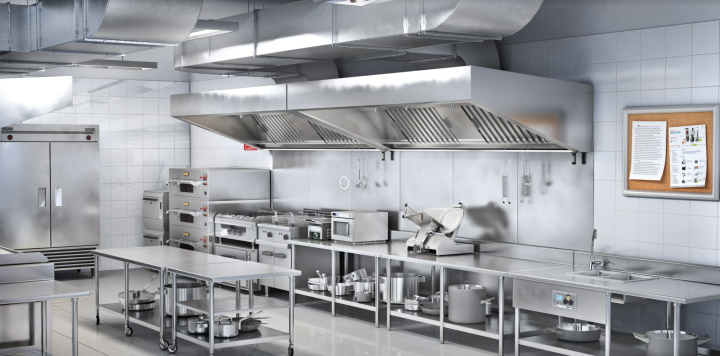
Designing a commercial kitchen might require more considerations than when creating a basic home kitchen. There’s more food equipment, appliances, and tools. You need to ensure the layout is smart to accommodate all the workers, chefs, and materials, and you must think of a kitchen design that will yield a more efficient workflow.
A clean and well-streamlined kitchen always produces successful outcomes. Food orders are served timely and your staff is happier in their working environment, contributing to overall business efficiency. Make your kitchen space as functional as possible so that everyone and everything in your food business can take advantage of the excellent and stress-free environment.
Before you decide where to place all the things in your commercial kitchen, it's best to consider helpful pointers like the following:
1. Match Your Design to The Restaurant’s Menu
While considering the kitchen design of your restaurant, it’s best to decide what menu and dishes you’re offering. Your products will impact how your kitchen will be laid out. Thoroughly study your menu to assess your kitchen's needs. It's impossible to design a one-size-fits-all kitchen.
Your commercial kitchen will likely include prep tables, storage areas, and dishwashing stations, but where to put your machines and tools and they’re arranged will depend significantly on the food you plan to serve. Therefore, before hiring a reputable kitchen designer like Kitchen Shack, settle in with your menu and dishes to serve to your customers.
Also, now may be an excellent time to get your kitchen team involved and ask for their suggestions regarding the kitchen design and layout. They are the ones most familiar with the space and will have an idea of which layout is more accessible and optimal for them. The restaurant staff should know what kind of equipment and configuration will work best for the menu.
2. Keep It Simple
Messy kitchens lead to confusion and poor sanitation, which negatively impact foodservice operations. Consider simplifying your kitchen design to maximize space and functionality. There is no room for things that aren't useful in the kitchen, like decorative elements or bulky furniture. Invest in modular furniture and fixtures to save space and time for staff and workers to travel back and forth from one area to the next.
Check out your shelves and cupboards and ensure that all these are useful and necessary. Ensure that everything is stored correctly. For instance, use proper storage for coffee beans, decanters for liquid seasonings and sauces, and organize all containers to keep ingredients fresh and clean. Keeping your kitchen as basic and straightforward as possible will make it look more organized and more hygienic.
3. Create Workstations
Another tip in designing a restaurant kitchen is to organize workstations to maximize productivity and tap into each employee's skill and creativity. Depending on your menu, you'll have to set up respective workstations to produce the different dishes. For instance, you'll need to have a prep table, a fry station, a dessert area, and a plating section. There should be one or more workers assigned to each station.
For a station to run efficiently, it requires the appropriate implements. Minimized movements help optimize output. Hence, it's essential to arrange the workstations efficiently and reduce travel time. Also, ensure that the ingredients and food items are all well-arranged and labelled to save time checking everything else all at once. Keep all ingredients marked no matter where they're stored. The fridge should also have labels, including shelf lives and expirations dates, making it easy for everyone to distinguish items and get rid of whatever is spoiled.
4. Invest In What’s Necessary
There are a lot of cool kitchen gadgets today, but when it comes to the design of commercial kitchens, each tool and piece of equipment must be necessary, not just wanted. Follow this tip as it can increase your savings over time. Unnecessary tools and equipment in your kitchen will not only rip off money from your business investment but will also take up a lot of space that can otherwise be used for something more relevant. Therefore, before purchasing any innovative food processors and kitchen gadgets, consult with the entire kitchen staff.
You can also invest in multi-purpose kitchen tools that perform multiple tasks at once—an excellent investment in terms of money, time, and space. Check which functions can be automated and reduce manual labour by investing in those machines. The key is to ensure all your expenses are necessary so you don't end up wasting away the essential resources of your business.
Conclusion
At the end of the day, you should be able to produce a smooth workflow in your restaurant kitchen. It's best to include your kitchen staff in the designing and planning because they're knowledgeable about the workstations, kitchen activities, and task requirements. Employee happiness often results in customer satisfaction, which in turn means revenue. Hence, follow the tips enclosed in this article to have optimal kitchen design for your food business.






